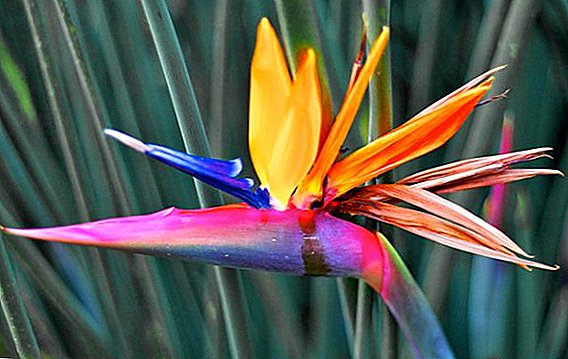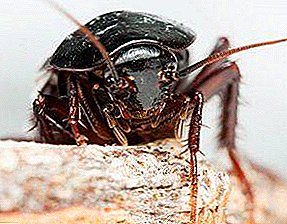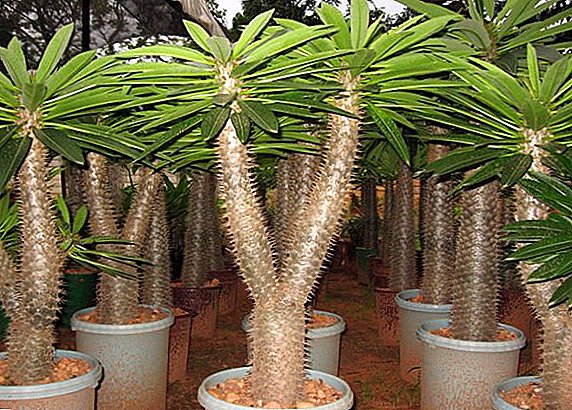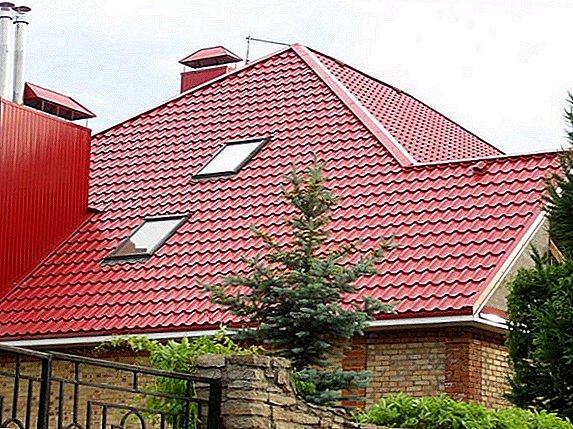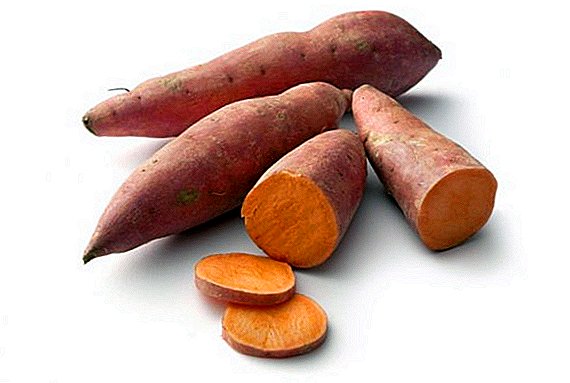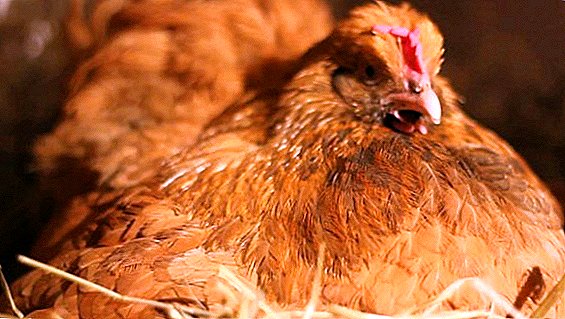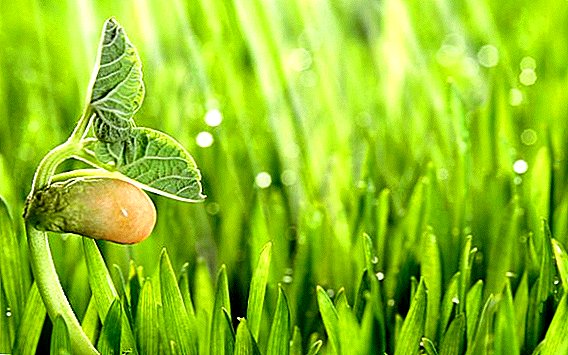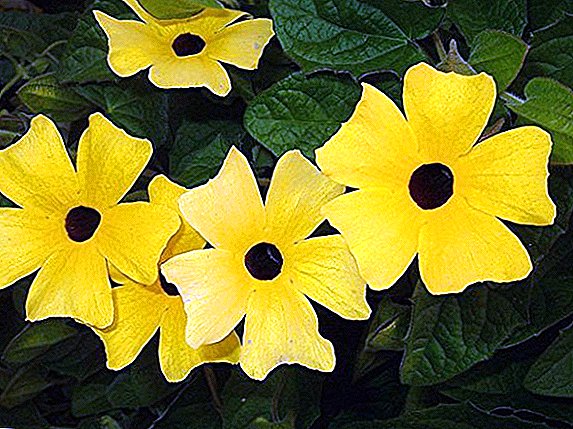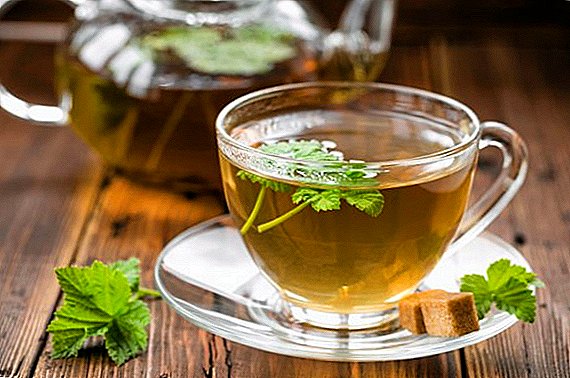 Everyone has long been well aware of the benefits and excellent taste of the fruits of raspberries, but few know that the benefits can be derived from such a much less well-known means, like raspberry leaves. A very popular method of application of this product in the household is brewing tea from it. This article aims to introduce you to useful properties, as well as possible harm from the use of raspberry leaf tea.
Everyone has long been well aware of the benefits and excellent taste of the fruits of raspberries, but few know that the benefits can be derived from such a much less well-known means, like raspberry leaves. A very popular method of application of this product in the household is brewing tea from it. This article aims to introduce you to useful properties, as well as possible harm from the use of raspberry leaf tea.
About the benefits of crimson leaves
Made from raspberry leaves, tea, in contrast to store counterparts, containing a large number of different preservatives, flavor enhancers and flavors, is a completely natural product. It is used as a component in the complex therapy of many diseases. The positive effects of this product are primarily based on the natural composition of the leaves, including a huge amount of biologically active substances and vitamins. 
Did you know? Raspberries have been known and cultivated as a fruit plant since the days of ancient Rome. The first written mention of this bush was left by Cato the Elder, mentioning it as one of the fruit plants in the 3rd century BC.In addition to the manufacture of tea, this product is well suited as a basis for the creation of various tinctures, tinctures, as well as decoctions. Raspberry leaves are widely used in cosmetology, where various masks, creams, shampoos and rinses with a rejuvenating effect are made from them.
Learn how to make tea from the leaves of cherries, currants, blueberries, thyme and mint.Do not forget that the leaves, unlike fruits, can be prepared for the winter without much harm to their miraculous composition, having collected the amount you need in time and dried. In winter, tea from these sheets will be an excellent help in combating the body with various infectious and viral diseases, help the immune system recover from a cold or speed up the treatment of a cold.
Chemical composition
Raspberry leaflets contain a huge amount of biologically active substances, vitamins and minerals, which together make them almost one of the best, wholesome and tasty tea-making products. They include:
- vitamins C, E, PP, B;
- plant fiber;
- astringents and tannins;
- organic fruit acids (lactic, malic, succinic);
- bioflavonoids and polysaccharides;
- various mineral elements: iodine, magnesium, zinc, copper, iron, manganese, potassium, sodium, calcium, phosphorus;
- salicylate - a substance that is similar in its properties to aspirin;
- various antioxidants;
- resins;
- mucus.

Did you know? There is a purple raspberry that was first obtained in Geneva in 1893 as a result of the artificial crossing of black and red raspberries.
What is the use of raspberry tea
The high saturation of raspberry leaves with biologically active substances makes tea one of the most beneficial among other types of tea. We give a list of useful properties that carries a drink.
- Activates the body's immune function.
- It helps to transfer and cure viral and bacterial diseases faster.
- Preventive effect on the formation of atherosclerotic plaques.
- Helps to restore the correct heart rhythm.
- Shows expectorant and antipyretic effect.
- Accelerates the process of restoring the normal functioning of the gastrointestinal tract after illness.
- Promotes detoxification processes.
- Excretes fluid from the body.
- It makes it easier to endure a diet and lose weight faster.
- It accelerates wound healing when used in the form of lotions.
- It helps in the treatment of infectious diseases of the oral cavity (gingivitis, stomatitis, etc.).
- Used in the form of lotions for conjunctivitis.
- Relieves pain during menstruation and reduces bleeding.
- As a bath is used to treat endometriosis and inflammation of the appendages.
- Helps to cope with stress, has a positive effect on overall mood and vitality.
Is it possible
Despite the many positive properties of this product, in every person's life there are moments of particular vulnerability to environmental factors. Some of these situations and the possible effect of raspberry tea on the body during these periods are discussed below.
We advise you to read about the beneficial properties of tea made from blueberry, hawthorn, sea buckthorn, rowan red, princess, rosehip and apples.
Pregnant
There are no studies that would say with certainty that the use of this product during pregnancy can cause any harm to the expectant mother or child, as, however, there are no studies that prove the opposite. Some midwives do not recommend drinking this drink before the 32nd week of pregnancy, so as not to provoke the risk of premature birth.
Important! Before using this tool, first consult your obstetrician-gynecologist.Traditional medicine, in turn, advises starting to drink such a tool from the very beginning of pregnancy, because it is believed that it helps to prevent the weakness of labor, softens the process of passing the child through the birth canal and contributes to a more complete disclosure of the cervix in labor.

Nursing
No negative effect on the health of babies whose mothers regularly consume this drink was observed. However, there is always a chance of developing allergic reactions in response to the antigens contained in tea that enter the milk from the mother’s bloodstream. If you notice hives in the baby, try to drop the tea for a few days and transfer the baby to artificial feeding for this time. After that, resume breast feeding.
It will be interesting to know how to dry raspberry leaves.This will provide an opportunity to understand what is the cause of allergies. In general, such a drink will have to saturate breast milk with vitamins and minerals useful for the baby, make it more useful and nutritious. The natural analogue of aspirin, salicylate, will help your baby cope better with abdominal pains, will have a calming effect, and antioxidants and vitamins that got into the milk through mother’s blood from tea will help to regulate homeostasis and strengthen the baby’s health.
For children
Raspberry leaf tea is great for children as a useful and tasty alternative to shopping counterparts. At the same time, vitamins, minerals and biologically active substances contained in it will contribute to their normal growth and development. Calcium, contained in large quantities in the leaves, will take part in the formation of a healthy skeleton, and iron will help to synthesize enough red blood cells in order to provide all the cells of the young body with enough oxygen.
Possible harm
This drink is not capable of harming the human body when it is used in moderate quantities and without various abundant additives in the form of sugar, honey, candy or other confectionery.
Hibiscus tea is a cure for all diseases.There is a risk of potential harm associated with the presence of the same salicylate - overdose of tea from these leaves may cause symptoms such as dizziness, abdominal pain, tinnitus, nausea, increased sweating, ear congestion. If you experience similar symptoms, we recommend that you consult a doctor.
Contraindications
Among the contraindications to the use of this product should be the following states:
- gastritis with increased acidity of the stomach;
- gout;
- constipation;
- individual intolerance to raspberries and any of its other components;
- chronic renal failure;
- peptic ulcer and duodenal ulcer;
- asthma;
- Some doctors do not recommend it in the 1st and 2nd trimester of pregnancy.

Raspberry tea: cooking features
After studying all the miraculous properties of this drink, you probably wanted to cook it yourself. Below we touch on all aspects that are useful in order to brew the most delicious and most useful tea from raspberry leaves.
Choosing leaves when buying
Given the cheapness of this product, many buyers do not pay enough attention to the process of selecting leaves, and this is a completely wrong approach, because using spoiled leaves can not only not bring the desired effect, but also cause significant harm to your health. First of all, when buying, you should ask the seller to show him the fruits from the same bush from which you are going to buy leaves.
Find out how white acacia, linden, magonia, hazelnut, schisandra, goldenrod, woodlouse, meadowsweet, quinoa, coltsfoot, burdock and chervil tea are useful for the human body.If they are unhealthy in appearance, have black or brown spots, if raspberries are small, savory or have a third-party taste, it is better to refrain from buying such a product. Be sure to carefully look at the leaves to see if they have external damage in the form of various spots, whether they are solid, whether they are damaged by pests.
 Then smell the leaf, it should have a pleasant, strong aroma, with a hint of raspberry. Try the sheet to the touch. Ideally, it should resemble a sheet of paper in terms of density, restore the original structure after a slight squeeze, and should not break too easily. This behavior suggests that the sheet was recently torn from the bush, has not yet had time to lie down and is quite suitable for further processing.
Then smell the leaf, it should have a pleasant, strong aroma, with a hint of raspberry. Try the sheet to the touch. Ideally, it should resemble a sheet of paper in terms of density, restore the original structure after a slight squeeze, and should not break too easily. This behavior suggests that the sheet was recently torn from the bush, has not yet had time to lie down and is quite suitable for further processing.Where to collect, and how to dry the leaves
Since the sheets are not the most valuable component in a raspberry bush, it is rather difficult to find them on the shelves. Sometimes it happens that unscrupulous sellers under the guise of crimson leaves can sell you absolutely not what you need, and therefore, in order to be sure of their quality, it would be best to go on an independent journey for this material.
Also dry at home: wild rose, apples, plums, walnuts, oyster mushrooms, garlic, hawthorn and greens.The best place to collect this material is woodland, forest belts and other places of potential growth of these bushes, which are at a considerable distance from roads and large industrial facilities. This need is primarily due to the fact that such leaves will be free from harmful impurities and will give you a maximum of useful and nothing harmful in the cooking process. Quite rarely thickets of raspberries can be found immediately, as soon as you entered the potential territory of their growth. Often they are a little deeper, most likely you will be able to find them in the first forest glade, which you will see in the process of deepening into the forest. It is necessary to carefully examine each bush for the presence of red or yellow berries on it, and sooner or later you will find what you are looking for.
Bushes, as a rule, grow quite well, and therefore you do not have to run from one place to another in order to pick enough leaves. Drying the sheets is a rather responsible process. They can not be dried in the sun, because it will lead to the destruction of many nutrients. In addition, it is necessary to observe low humidity and good ventilation in the room where the whole process takes place, because the leaves are very susceptible to various fungal diseases.
Important! All sheets that have acquired a brown color, are damp or blackened, must be removed from the total mass, because they can spoil all your harvested material.Sheets lay out a thin layer on any fabric in a shaded room with good ventilation. For even drying, it is sometimes recommended to turn them over and stir them slightly. A month later, you will get ready-to-eat, slightly twisted leaves of green, which crumble into fine dust when rubbing them between your fingers.

How to make a drink
To make tea from raspberry leaves, you will need to take 0.5 liters of boiling water for every 4 tablespoons of dried leaves. After you have filled the desired amount of raw material with boiling water, you will have to wait 2 hours, since it is during this period that all useful components are transferred to the water.
The combination of sheets with fresh berries is possible, it will help strengthen the anti-inflammatory and antipyretic effects required in the treatment of colds and flu. Drink the drink is strained, cold, preferably without the addition of sugar or other sweeteners. Combinations with various other herbs, flowers and dry leaves are also possible. 
What combines raspberry tea
As already mentioned, raspberry tea is undesirable to mix with sugar, so that it does not lose its healing properties. However, it is not forbidden to use honey or berries for this purpose. Among other components with which this drink is perfectly combined it is worth highlighting:
- dry ginger root powder;
- currant berries and leaves;
- dog rose;
- leaves and rose petals;
- clover flowers;
- mint;
- various citrus fruits (lemon, orange peel, grapefruit);
- oregano;
- leaves of lingonberry and blackberry.
Is there any benefit from the fermented product
Fermented tea on the basis of raspberry leaves, undoubtedly, will have a more pronounced, rich and rich taste, but it is necessary to clearly understand that during the fermentation many of the beneficial properties that are inherent in the leaves are lost because the biologically active substances in them are destroyed. Of course, a similar fate awaits not all components, but only some of them, for example, almost all vitamins and minerals will remain unchanged, but more complex substances in their chemical structure, like the same salicylate, will inevitably be destroyed. Therefore, we can definitely say that the benefits of such tea will decrease. However, it should be noted that it will still be much more useful than many store counterparts.
Raspberry products
After a fairly in-depth discussion of the properties of raspberry leaves and the characteristics of their tea, it would be unfair not to mention the other components of this bush. Below you will find brief information about the benefits of other parts of the raspberry bush.
Berries
Raspberry berries have long been famous for their antimicrobial properties, the high content of vitamin C in their composition allows us to claim that it is one of the best means capable of normalizing the immune system and helping the body to fight infection. The high concentration of B vitamins makes them an excellent remedy for people suffering from various pathologies associated with the nervous system, and the essential oils and fiber that make up them make it possible to normalize the work of the gastrointestinal tract. 
Did you know? The ancient Greeks believed that the raspberry was originally white, and the red color it received when one of the nymphs picked berries to feed little Zeus, and wounded his hands in blood.
Twigs
Sprigs of raspberries have similar effects to the leaves and fruits, but expressed on somewhat smaller scales. It should be noted that raspberry twigs are also suitable for brewing tea from them, as well as for preparing various decoctions and tinctures. First of all, all these tools are used as drugs for various colds and diseases of the upper respiratory tract, but their scope is not limited to this. They can also treat hemorrhoids, skin diseases, heartburn, abdominal pain, problems in the gastrointestinal tract and many other diseases.  We hope our article has helped you to get acquainted with the tea from raspberry leaves. Remember that even this, without doubt, is a useful and effective remedy, as it cannot be the only component in the treatment of any disease. Any treatment requires an integrated approach and the use of both traditional medicinal and folk remedies. Do not hesitate to contact your doctor if such a need arises and be healthy!
We hope our article has helped you to get acquainted with the tea from raspberry leaves. Remember that even this, without doubt, is a useful and effective remedy, as it cannot be the only component in the treatment of any disease. Any treatment requires an integrated approach and the use of both traditional medicinal and folk remedies. Do not hesitate to contact your doctor if such a need arises and be healthy!


